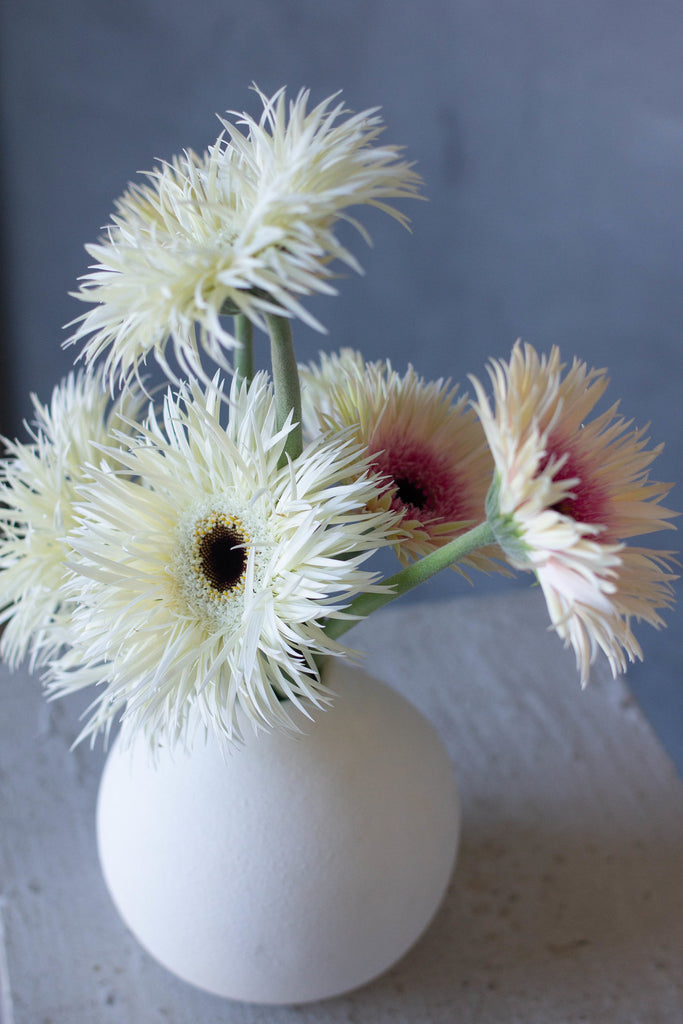Just like everything else these days, the cost of flowers has been going up. This rise in prices affects everything from personal purchases to large-scale events and businesses.
We know how hard it is when costs go up, especially in operating a small business in Vancouver where the cost of living is already higher than elsewhere in Canada. Recent changes in flower prices have over-emphasized the need for change in our business practices by making sure we're making more sustainable choice for the future of our planet but also, for our collective bottom line.
Here are some of the things that are happening in the flower industry right now:
Supply Chain Disruptions
One of the most significant factors contributing to the increased cost of flowers is supply chain disruption. The global supply chain has faced numerous challenges in recent years, including:
- Pandemic Impact: The COVID-19 pandemic led to widespread lockdowns, affecting every aspect of the flower supply chain, from growers to transporters. Restrictions on movement and labor shortages disrupted the harvesting, shipping, and distribution of flowers.
- Transportation Costs: The cost of shipping has surged due to fuel price increases and a shortage of shipping containers. Flowers, being perishable items, require expedited and often more expensive transportation methods to ensure they arrive fresh.
Increased Demand
The demand for flowers has risen sharply in recent years, influenced by several factors:
- Pandemic-Induced Lifestyle Changes: With people spending more time at home during the pandemic, there was a notable increase in home gardening and flower purchases for home decor. Flowers became a way to bring joy and a touch of nature indoors.
- Resurgence of Events: As restrictions eased, there was a pent-up demand for weddings, parties, and events that had been postponed due to COVID-19. This surge in events has driven up the demand for flowers significantly.
Labor Shortages
Just like every industry, the floral industry is also experiencing a labor shortage especially in the agricultural sector. Growing, harvesting, and arranging flowers is labor-intensive work, and many flower farms and florists have struggled to find and retain workers. The labor shortage has been exacerbated by:
- Immigration Policies: Stricter immigration policies in some countries have reduced the availability of seasonal and migrant labor, which is crucial for the flower industry.
- Pandemic-Related Issues: Health concerns and restrictions have also affected labor availability, with many workers unable to travel or work due to illness or quarantine measures.
Climate Change
As with many things, climate change has also had a direct impact on flower growing and production. Unpredictable weather patterns, extreme temperatures, and natural disasters specifically in the Fraser Valley region where we operate and source most of our flowers from, have affected crop yields and quality. For example:
- Droughts and Floods: These extreme weather events can destroy entire flower crops, leading to shortages and increased prices.
- Changing Seasons: Altered growing seasons have affected the timing and availability of certain flowers, further complicating supply and demand dynamics.
What does that mean for you (and us)?
The increased cost of flowers has of course had an impact on floral businesses like ours at Garden Party Flowers. Here's how you (and we) have been experiencing these impacts:
- Higher Flower Prices for Consumers: Consumers now have to pay more for the same bouquets and arrangements. This price increase can be particularly noticeable during peak seasons such as Valentine’s Day, Mother’s Day, and wedding season.
- Challenges for Florists: Florists face the challenge of balancing the higher costs with maintaining competitive prices. They may need to adjust their offerings, focus on more cost-effective flowers, or pass on some of the costs to consumers.
- Event Planning Adjustments: Event planners and couples planning weddings may need to adjust their budgets or floral designs expectations to accommodate the higher prices. This could lead to more creative solutions, such as using more greenery or fewer, but more impactful, floral arrangements.
Most of us have been feeling the crunch of a slowing global economy lately and for those of you who have continued to support us despite things feeling tight and gloomy, we thank you.
For those of you who would like to start, you can click here to place your first order!
